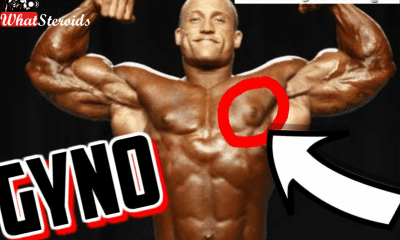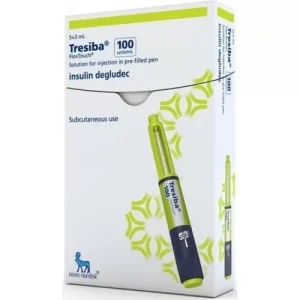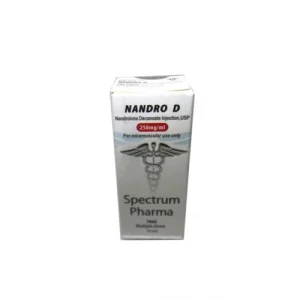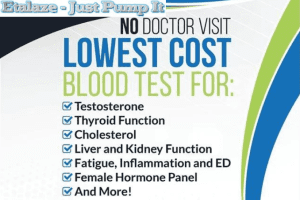Steroids
9 Causes of Gynecomastia and Man Boobs
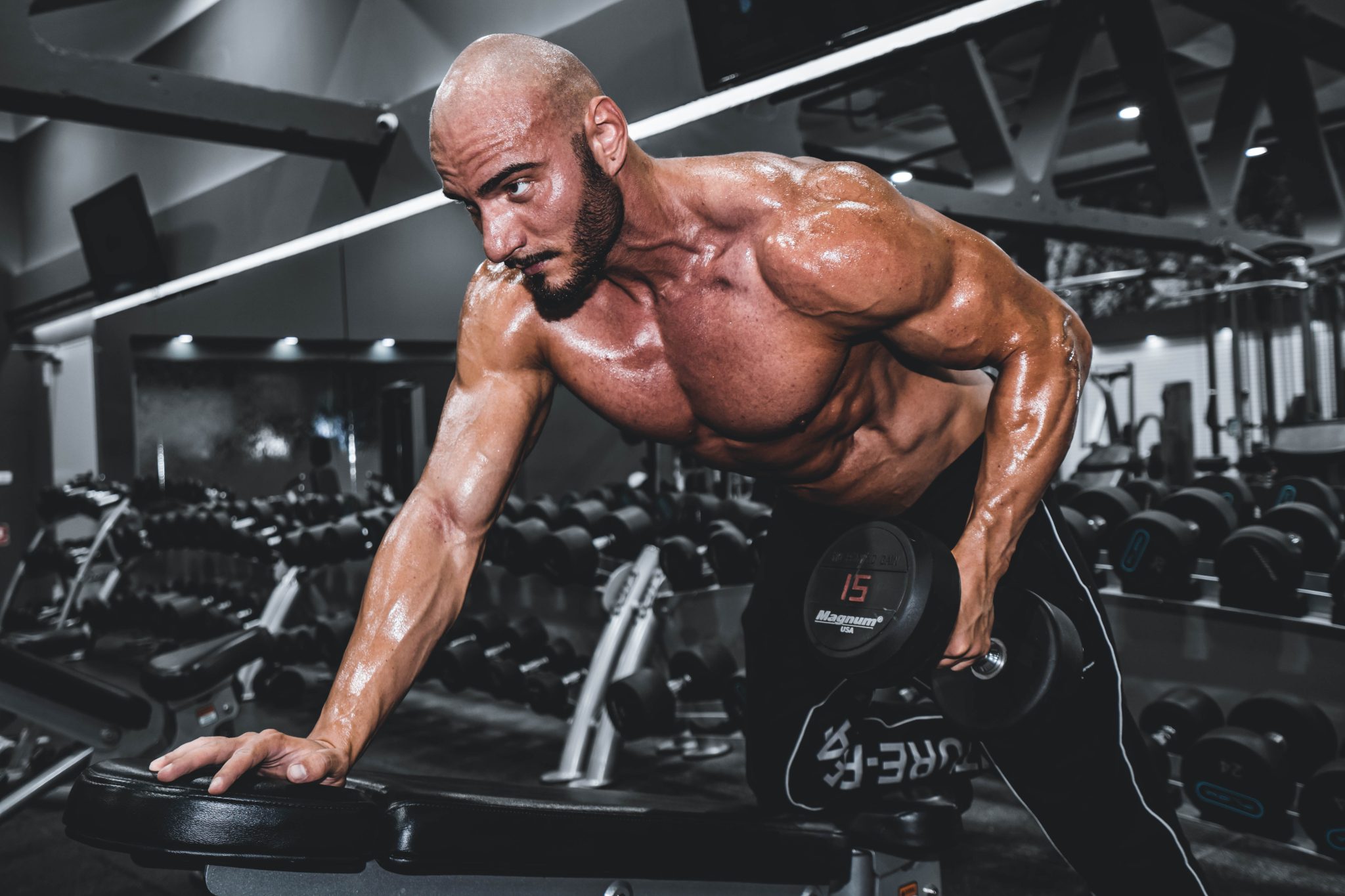
Gynecomastia is an emerging condition in men in the recent times. It can be referred with different names including Male breasts, Man boobs or simply moobs. Although harmless, the condition can cause serious trouble including the risk of developing breast cancer. The condition can easily be avoided although there are genetic causes, which means that the person is born with man boobs. This genetic condition is called Klinefelter Syndrome and less or nothing can be done in such a case.
What actually happens in gynecomastia is that there is an increase in breast tissue, particularly the glandular tissue and not the fat tissue in men. Men usually have breast tissue but not in large amounts as women do. The hormone that brings out this difference, calls estrogen and is usually in high amounts in females than males. Therefore, when a man develops breasts, most likely it will be an increase in the hormone estrogen.
The causes in one or more ways somehow will always point to an imbalance in the hormones estrogen and androgens. Any condition or substance that will lead to an increase in estrogen and a drop in androgens in makes will make them have gynecomastia.
Related Article:: The Effects of Estrogen on Body Composition – Estrogen Dominance
What are indicators of Gynecomastia?
Gynecomastia is a condition, which can easily be self-diagnosed. However, it is always advisable to see a medical specialist for proper medical diagnosis. It can occur in one or both breasts and in most cases; it starts out as a small painful or painless lump beneath the nipple. Eventually, the whole breast enlarges and then that will be gynecomastia. Breasts will enlarge unevenly sometimes. Some of the signs and symptoms include:
- The breast tissue becomes swollen.
- There is breast tenderness.
In some cases, it may be breast cancers causing the swelling. It is important to be able to distinguish between the two. Major differences between breast cancer in men and gynecomastia include:
- Cancer in most cases will be confined on one side while gynecomastia can be on either side.
- Cancer is usually not centered around the nipple unlike most cases of gynecomastia.
- Cancerous breast tissue usually feels hard or firm.
- Cancer have associated dimpling of the skin on the breast, the nipple may retract or some discharges nay be seen coming out and the axillary lymph node may be swollen.
How Gynecomastia is diagnosed?
Proper medical diagnosis of gynecomastia is done by a medical specialized in such a field. It basically involves taking your past medical history including drug use and medication accompanied by a physical examination of your breast tissue. Apart from doing the physical exam, other specialist go ahead to do other tests just in case you have other conditions. The most common tests include:
- Blood tests for example liver functions and even hormone tests.
- Testing of your urine.
- An x-ray of your breast tissue that has in low doses.
- Biopsy of the breast tissue when a suspicion of cancer is raised.
Risk factors of Gynecomastia
Who is likely to get gynecomastia? There are several risk factors that may lead to one getting this condition. Some are related to lifestyle while other are as a result of normal physiological processes. The risk factors implicated in gynecomastia include:
- Male teenagers growing normally are at risk of developing gynecomastia.
- Male infants.
- Aging.
- People exposed to certain diseases.
- Certain medications.
The causes of Gynecomastia
Gynecomastia has so many causes. Here, we highlight the top 9 causes of gynecomastia in men.
1. Obesity
Obesity refers to a situation where there is increased fat content in the body. It can be a cause of Gynecomastia and has been a common one in the recent past where we have had increased cases of obesity all over the world.
So how does obesity come in to cause obesity? It is believed that the increased fat in your body as well as in your breast tissue has a role in disrupting the hormones in your body including the estrogen and the androgen and therefore bringing about gynecomastia. The disruption is carried out because of a hormone called leptin, which increases, in levels when there is increased fat in the body.
In cases of obesity, leptin will rapidly increase in the body and this result in a condition called leptin resistance. Leptin resistance causes the brain to see that the body is starving and it directs its activities in ensuring that the body is getting enough nutrients and that reproduction is not important here. This implies that the hormones for reproduction in males, the androgens are suppressed and there will be a rise in estrogen, which will then cause gynecomastia.
2. Steroids
Perhaps the commonest causes of gynecomastia are the anabolic steroid used by bodybuilders and other athletes. Most if not all anabolic steroids are usually synthetic versions of testosterone. Since the body has the mechanisms of converting testosterone into estrogen, some of these anabolic steroids get converted into estrogen leading to development of gynecomastia.
Steroids >> HERE
Estrogen usually requires in the male body in limited amounts. It has several roles such as helping in maintaining healthy bones, sexual activities and help ensure that the fat content in men is low enough not to cause any health related conditions. However, beyond a certain limit, it comes with associated health risks one of which is gynecomastia.
So apart from causing trouble with your testicles among other side effects of the anabolic steroids, they can really make your life embarrassing by making you develop man boobs, which not every male person would want to be associated with. It is estimated that about half the cases of gynecomastia are as a result of anabolic steroid abuse.
3. Cancers
There are certain types of cancers implicated in causing gynecomastia. Most of the tumors sometimes are usually undetected hence the importance of seeking a proper medical diagnosis. Since gynecomastia is a result of hormone imbalance, these types of cancers must have a part to play in causing the hormonal imbalance.
The major tumors that have been known to have an impact on hormones are the testicular tumors and pituitary tumors (Prolactinoma). These tumors will result in either an increase in production of estrogen or a decrease in production of testosterone.
Testicular tumors for example can result in increased synthesis and production of a hormone called Human chorionic gonadotropin (HCG). HCG closely resembles Luteinizing hormone (LH) both in structures and in function. It therefore will also lead to increased production of testosterone and also the conversion of the produced testosterone to estrogen and that is where trouble comes in.
4. Genetic hereditary disorders
Another common cause of man boobs are some hereditary disorders that one is born with and which most likely run through their families. Klinefelters syndrome is the commonest of the causes. In this condition, an individual has 3 pairs of chromosomes instead of the usual 2 pairs. Normally, a man has the XY chromosome combination. However, in Klinefelters syndrome, there is an additional X chromosome forming the XXY combination.
In such cases, the patients will be sterile and gynecomastia is an outstanding feature. This is a bit hard to manage because it is not easy to change the chromosomal arrangement of a person.
5. Side effects of certain medications
There is a wide range of drugs that have gynecomastia as a side effect of taking them. In fact drugs ranks highly in causing man boobs causing even as high as a quarter of all the causes of gynecomastia. So how do drugs come in when it comes to causing hormonal imbalance, which causes man boobs?
Well, most drugs and especially the ones that are prescribed harbor about three effects that are likely to cause gynecomastia:
- They have an estrogen like activity when taken.
- Can raise the levels of estrogen directly.
- Have androgens as part of them and these androgens can be converted to estrogens.
So, talk about amphetamines, antibiotics or any other common drugs and you will see that they somehow can be the reason why you are developing man boobs. It is good that you get to know the side effects of the drugs you are taking. Talk to your doctor about it and if you develop any signs of increased breast tissue, then you can consider stopping.
Here is a list of the drugs that are commonly known to cause gynecomastia:
- Spironolactone - it is a diuretic substance and contains activities that are opposite to those of androgens.
- Drugs that are calcium channels blockers that are important treating hypertension for example nifedipine.
- Drugs that inhibitors of angiotensin converting enzyme (ACE) also used in treatment of hypertension for example captopril.
- Antibiotics such as metronidazole and isoniazid.
- Drugs used in management of ulcers such as cimetidine and ranitidine.
- Digoxin and diazepam.
6. Abusing alcohol
There are several ways in which alcohol can cause gynecomastia. This happens when one drinks excess alcohol every day. One can be prepared to have grown his belly and also be prepared to have man boons as well.
The first way in which alcohol can cause man boobs is through its damage to the liver. The liver is a very crucial organ in getting rid of hormones and when it is damaged due to alcohol abuse, this activity tends to reduce and eventually stop. One of the hormone that will not be eliminated from the body is estrogen. Over time, estrogen gets to accumulate and its immediate effects includes causing Gynecomastia. Apart from being inefficient in eliminating estrogen, a damaged liver is even more likely to convert the androgens into estrogens.
Apart from damage to the liver, alcohol itself in most cases contain certain compounds that will influence the balance of estrogens and testosterone in the body. The most common compounds found in alcohol are the phyestrogens. Phytoestrogens are basically compounds that mimics the estrogen in the body. How do they get into the alcohol we consume? Well, the hops that use to make beer and also some plants that have a part in making most alcoholic beverages have these compounds in abundant and that is how they end up in the alcohol we consume.
7. Aging
As men age, most of them tend to have an imbalance in their hormonal composition. The first time you may experience gynecomastia is at puberty. During puberty, one produces lots of hormones in high amounts including the estrogens. This is likely to cause man boobs. This is usually not something to worry about since as you leave teenage behind, your hormones come to level and everything goes back to normal. So as long as it does not progress for a long time, there is absolutely nothing to worry about teenage Gynecomastia.
In other cases, you may experience what the experts call idiopathic gynecomastia at some point in life and this may not go away. Idiopathic implies that the growth of the breast tissue cannot simply be traced to the cause. However, there has been some explanations as to why there may be such a case. One common one is that as we men grow, different part of the body also grow including the breast tissue. But the body does not stay in one state all the time and it is likely that the as the body reduced to grow at some point, the breast tissue did not cease for some reasons, hence gynecomastia.
Must Read:: How to Do Bodybuilding Above 50 years Age
As one grows older also, testosterone levels tend to become lower and lower probably because there is less production due to aging of the tissue responsible for its production. This means that estrogens have an upper hand and can now easily cause man boobs. Sometimes older people may have been exposed to some estrogens or something that causes hormonal imbalance without actually having an idea what it was. This might also cause Gynecomastia in old age.
8. Kidney and liver diseases
Another major cause of gynecomastia is severe disease of either the kidney or the liver or even both. These two organs are particularly important in regulating some hormones and other proteins that have a role in preventing development of man boobs.
The liver as seen in alcohol abuse has a major role to play when it comes to giving you gynecomastia if you do not take great care of it. Many conditions that damage the liver are due to alcohol abuse but any other disease that damages the liver including some viral diseases can lead to disruption of normal hormonal elimination hence causing man boobs. Apart from reducing disruption, the liver has a role in regulating synthesis of certain proteins and one crucial protein regulated is the sex hormone binding globulin (SHBG). The SHBG binds testosterone. In severe liver disease, this protein tends to be over produced and will bind more of the testosterone produced. This lowers the amount of testosterone in circulation leading to trouble.
Related Article:: Top 20 Liver Detox Products and Anti-Estrogens on Amazon
Kidney diseases also cause almost a similar situation only that the most severe forms of kidney disease will lead to such a condition. Although man boobs are also a clear symptom, one tends to notice other common symptoms first including abnormal urinary discharges and even skin rashes first before noticing gynecomastia.
9. Smoking Cigarettes And Using Marijuana
Cigarette smoking causes man boobs indirectly. Excessive smoking will lead to development of lung cancers some of which just like the testicular and pituitary tumors will cause a disruption in the hormonal balance and this will lead to gynecomastia. Lung cancers in fact have an upper hand when it comes to causing gynecomastia. All the other cancers that are known to cause hormonal imbalance. The good news is that the lung cancers are a bit more preventable unlike the other forms of cancers.
Apart from cigarettes, Marijuana is another common cause of man boobs. So many people are still not aware of this and therefore sometimes they tend to think that marijuana has no role in this. Using marijuana in excess amounts has the effect of increasing breast tissue in men. Hoe this happens is still a mystery but some studies suggest that marijuana depresses the levels of testosterone.
Other common causes of Gynecomastia
There are still so many other causes of man boobs and here are some of the honorable mentions:
- Depriving yourself of certain nutrition in the name of deprivation diets.
- Drugs used to manage hair losses.
- Plant oils and natural grooming products.
- Testosterone replacement therapy.
- Time in the womb as a fetus.
Read this >> Elucidation of Testosterone Replacement Therapy
Will the Gynecomastia go away?
Having looked at the causes of gynecomastia, you may be wondering how long does one need to have this condition before it goes away. The truth is, it depends on the type and cause of gynecomastia. Pubertal gynecomastia for instance may regress once one is out of puberty. Of course, there are rare cases where such gynecomastia persists in which case there will be need of medical treatment.
Other forms of gynecomastia stay for a longer period of time. Cases have been reported where gynecomastia has lasted for more than 12 months without treatment. If gynecomastia lasts that long, most likely, it will undergo fibrosis and this will complicate treatment.
Related Article:: Steroids, Gynecomastia and GynoSurgery
Treatment of Gynecomastia
There are two major approaches in the treatment and management of gynecomastia. However, gynecomastia in most cases is a condition which will go away on its own within a period of about six months provided that the condition leading to it eliminate as much as possible. If it does not go away, treatment can either be:
- Using drugs.
- Surgical approach.
Using Drugs in Treatment of Gynecomastia
There are several drugs, that we can use in the management of gynecomastia. Their effectiveness has been in question but they are still used. In fact, most if not all of them have not been approved by the FDA. The commonest drugs that have been in use include:
- Testosterone replacement in older men but not younger males who have normal testosterone levels.
- Clomiphene taken for a period of 6 months has also some good results.
Clomiphene Citrate >> HERE
- There has also been the selective estrogen receptor modulator tamoxifen, which works by reducing breast volume. It has also been helpful in cases of severe and painful gynecomastia.
- Danazol, a synthetic derivative of testosterone helps reduce the levels of estrogen in the body by limiting its production by the testis.
TAMOXIFEN >> BUY IT
Surgical Approach in the Treatment of Gynecomastia
Drugs are more effective in the treatment of gynecomastia during the early stages of the condition. However, after a period of about 12 months when the glandular tissue has been transformed into a fibrous tissue, drugs become less effective and only surgery might prove helpful here.
Surgical reduction of the breast tissue refers to as reduction mammoplasty and use it in cases where we have:
- Severe gynecomastia.
- Long term gynecomastia.
- Drugs have failed to bring the condition back to normal.
Prevention of Gynecomastia
Like treatment, prevention of gynecomastia depends on the types of gynecomastia one is talking about or how it is. Gynecomastia caused by hormonal imbalance as a result of for example aging or pubertal changes cannot be prevented. Other forms for example those which are caused by some medical conditions can be prevented. This will be through preventing the underlying conditions such as avoiding abuse of alcohol. Having a clear and sound knowledge of everything to do with Gynecomastia can help you avoid it in the future if it is the kind that can be prevented.
Conclusion
Gynecomastia is a common condition that has been a major cause of concern for men. It so many causes some of which have been highlighted in this article. Gynecomastia can easily be managed and one is bound to have his normal breast composition. It is however, an embarrassing condition and many men have been suffering silently. In case where you have the condition, you can do some of the following things so that you can avoid being depressed:
- Get some counseling from a trusted expert.
- Reach out to the people you love including your friends and family members.
- Connect to people with similar conditions or who have gone through the same condition.
Anabolic Steroids
Joint Stiffness: How to Manage It While on AAS
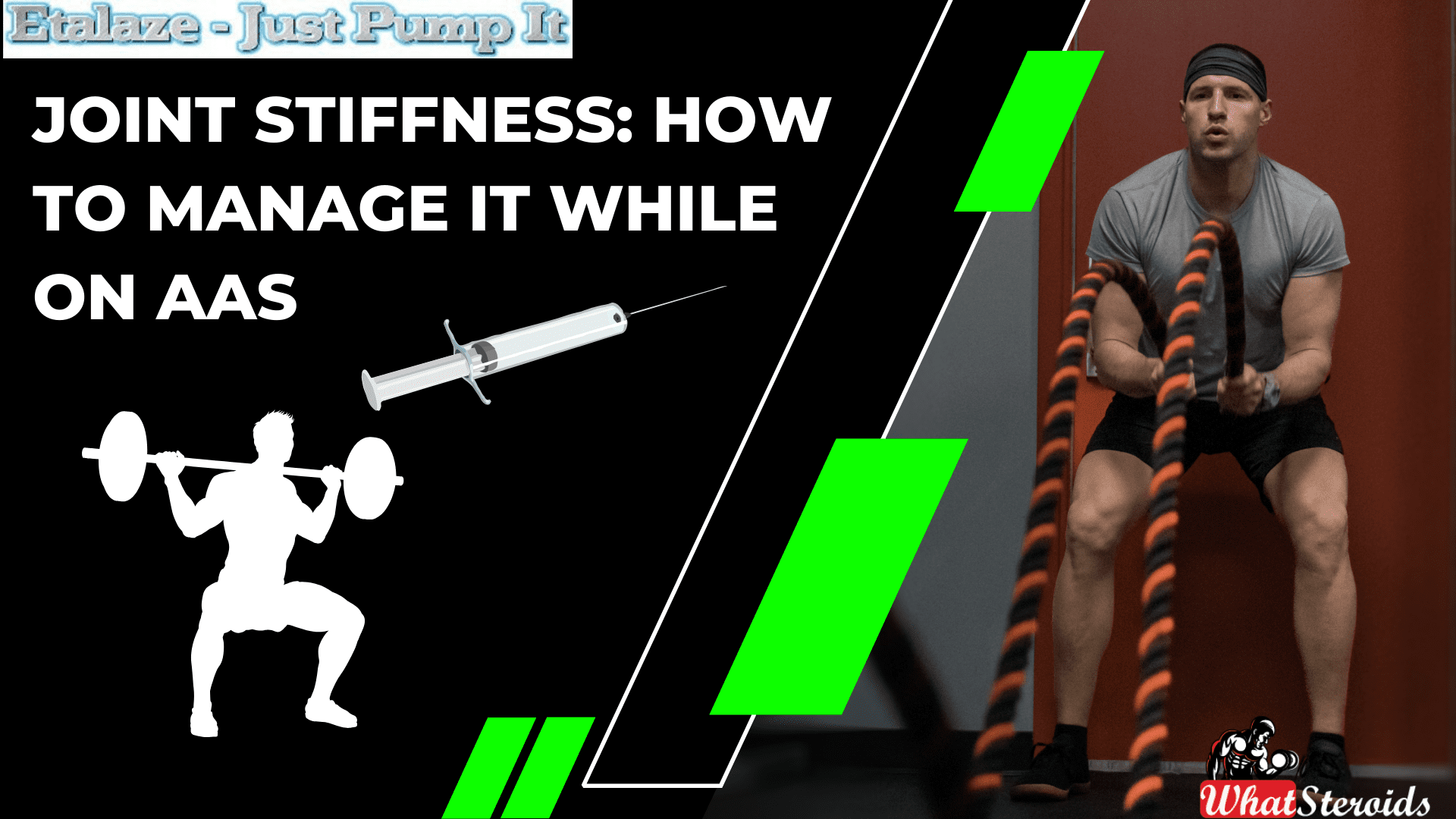
Joint stiffness is a common issue among bodybuilders who use androgenic anabolic steroids (AAS). Here's how it happens and what it involves:
AAS Mechanism of Action
Anabolic-androgenic steroids (AAS) work by enhancing muscle growth and strength. They enlarge muscle cells through hypertrophy, leading to increased muscle mass.
Activation of Androgen Receptors (AR)
-
- AAS, including those produced naturally (such as testosterone and dihydrotestosterone), bind to and activate the androgen receptor (AR).
- The AR is present in various tissues throughout the body.
Androgenic and Anabolic Effects
AAS effects can be categorized into:
Androgenic: These relate to the development and maintenance of male sexual characteristics.
Anabolic: These involve increasing bone density, muscle mass, and strength.
Impairment of Testosterone Biosynthesis
-
- In supraphysiological doses, AAS can impair testosterone biosynthesis in tissues.
- This disruption occurs due to their interaction with AR signaling.
How AAS Contribute to Joint Stiffness
Water Retention and Electrolyte Imbalance
-
- AAS can cause water retention, leading to increased fluid in the joint spaces. While this might initially seem beneficial, it can lead to stiffness if the excess fluid disrupts normal joint function.
- Electrolyte imbalances caused by AAS can affect muscle and joint function, contributing to stiffness.
Changes in Collagen Synthesis
-
- AAS can affect the synthesis and degradation of collagen, a primary component of connective tissue. This can lead to a decrease in the elasticity and resilience of tendons and ligaments, making joints feel stiffer.
Increased Muscle Mass
-
- Rapid gains in muscle mass can place additional stress on joints, which may not have time to adapt, resulting in stiffness and discomfort.
Altered Pain Perception
-
- Some AAS can alter pain perception and inflammatory responses, potentially masking injuries or causing changes in how the body responds to minor joint stresses, leading to stiffness.
Which Specific AAS Mainly Cause Joint Stiffness?
While not all anabolic-androgenic steroids (AAS) exhibit these adverse effects, certain ones are more prone to causing them. These include:
- Winstrol
- Masteron
- Proviron
- Halotestin
- Trenbolone
Additionally, high doses of testosterone, Dianabol, and Trestolone may also carry similar risks.
Dealing With Joint Stiffness Caused By AAS
Most AAS are dry compounds known for causing joint dryness. Some are usually wet compounds, which can lead to joint problems when taken in high doses without an aromatase inhibitor (AI), resulting in excess water retention that affects the joints.
Other AAS either have a neutral impact on the joints or enhance their strength and healing by boosting collagen production, with Nandrolone being a prime example.
To prevent joint issues when using wet AAS compounds, it is essential to use the appropriate AI dose (not too high) to manage estradiol levels and prevent excessive water retention.
Must Read: Anavar Cycle for Men and Women
For dry compounds, follow these guidelines to avoid joint issues:
Selective Testosterone Use
Ensure the use of a Testosterone base to achieve adequate estradiol conversion. While excess estradiol can cause water retention and joint damage, having the right amount is crucial for joint strength and lubrication.
Proper Gym Training
Exercise caution in the gym. Continuously pursuing personal records and lifting the heaviest weights can damage joints and cause injuries. Proper stretching and warming up with lighter weights are vital.
Supplements
Supplement with joint health supplements. Fish Oil at 6g daily or Krill Oil at 3g daily is essential for every AAS user. Additionally, taking MSM (Methylsulfonylmethane) at 1g daily and a few tablespoons of Collagen Powder daily will significantly benefit joint health.
Managing Other Forms of Joint Stiffness
Proper Warm-Up and Cool-Down
Engaging in thorough warm-up routines before workouts and adequate cool-down exercises afterward can help maintain joint flexibility.
Hydration and Nutrition
Staying well-hydrated and maintaining a balanced diet rich in essential nutrients like omega-3 fatty acids, glucosamine, and chondroitin can support joint health.
Supplementation
Using joint support supplements such as glucosamine, chondroitin, and MSM (methylsulfonylmethane) may help alleviate stiffness.
Monitoring and Adjusting Steroid Use
Careful monitoring of AAS dosages and cycles, under the guidance of a healthcare professional, can help minimize negative effects on joint health.
Rest and Recovery
Ensuring adequate rest and incorporating rest days into training routines can help prevent overuse injuries and joint stiffness.
Physical Therapy
Engaging in physical therapy or specific joint mobility exercises can improve joint function and reduce stiffness.
Long-Term Considerations
It's important to be aware that chronic use of AAS can lead to long-term joint issues. Regular check-ups with a healthcare provider, including monitoring of joint health, are crucial for those using AAS over extended periods. Recognizing the signs of joint problems early and taking proactive measures can help mitigate the risk of long-term damage.
Where to Buy AAS Online
Buying legitimate androgenic anabolic steroids (AAS) online can be challenging and carries significant legal, health, and ethical risks. However, if someone decides to proceed, here are some general tips on where to buy and how to check the quality:
Licensed Pharmacies (Where Legal)
In some countries, AAS can be purchased legally with a prescription from licensed pharmacies. Ensure to follow local regulations and obtain a valid prescription.
Reputable Online Retailers
Look for well-known, established online retailers with positive reviews and verified customer feedback. Forums, bodybuilding communities, and social media can provide recommendations.
Research Chemical Companies
Some companies sell research chemicals, including AAS, for "research purposes." Ensure these companies have good reputations and offer transparency about their products.
How to Check Good Quality
Third-Party Lab Testing
The best way to verify the quality of AAS is through third-party lab testing. Reputable sellers often provide lab reports or certificates of analysis that verify the purity and potency of their products.
Reviews and Testimonials
Check reviews on bodybuilding forums, websites, and social media platforms. Look for consistent positive feedback about product effectiveness, safety, and customer service.
Batch Numbers and Serialization
Legitimate products usually have batch numbers, expiration dates, and sometimes serialization. You can often verify these details through the manufacturer's website.
Packaging and Labels
Examine the packaging and labels for professionalism and accuracy. Poorly printed labels, misspellings, and low-quality packaging are red flags.
Customer Service
Good suppliers will have responsive and knowledgeable customer service. Ask questions about their products, sourcing, and testing procedures to gauge their reliability.
Price Comparison
If the price seems too good to be true, it probably is. Compare prices with other reputable sources to ensure you're not buying counterfeit or low-quality products.
Related Article: Varicose Veins in Bodybuilders: Risk Factors, Diagnosis and Management
Warning and Legal Considerations
- Legality: The legality of purchasing and using AAS varies by country. In many places, it is illegal to buy AAS without a prescription. Always check local laws before purchasing.
- Health Risks: Using AAS without medical supervision can lead to severe health issues. It's crucial to consult with a healthcare provider before starting any steroid regimen.
- Ethical Considerations: Consider the ethical implications of using AAS, especially in competitive sports where their use is often banned.
Conclusion
While there are ways to find and verify the quality of AAS online, it's essential to approach this with caution, awareness of the legal landscape, and a focus on health and safety. Overall, your joint health while on AAS should be a first priority so your training is not hindered.
Bodybuilding
Caffeine and Bodybuilding: Is Your Favorite Brew A Powerful Ally?
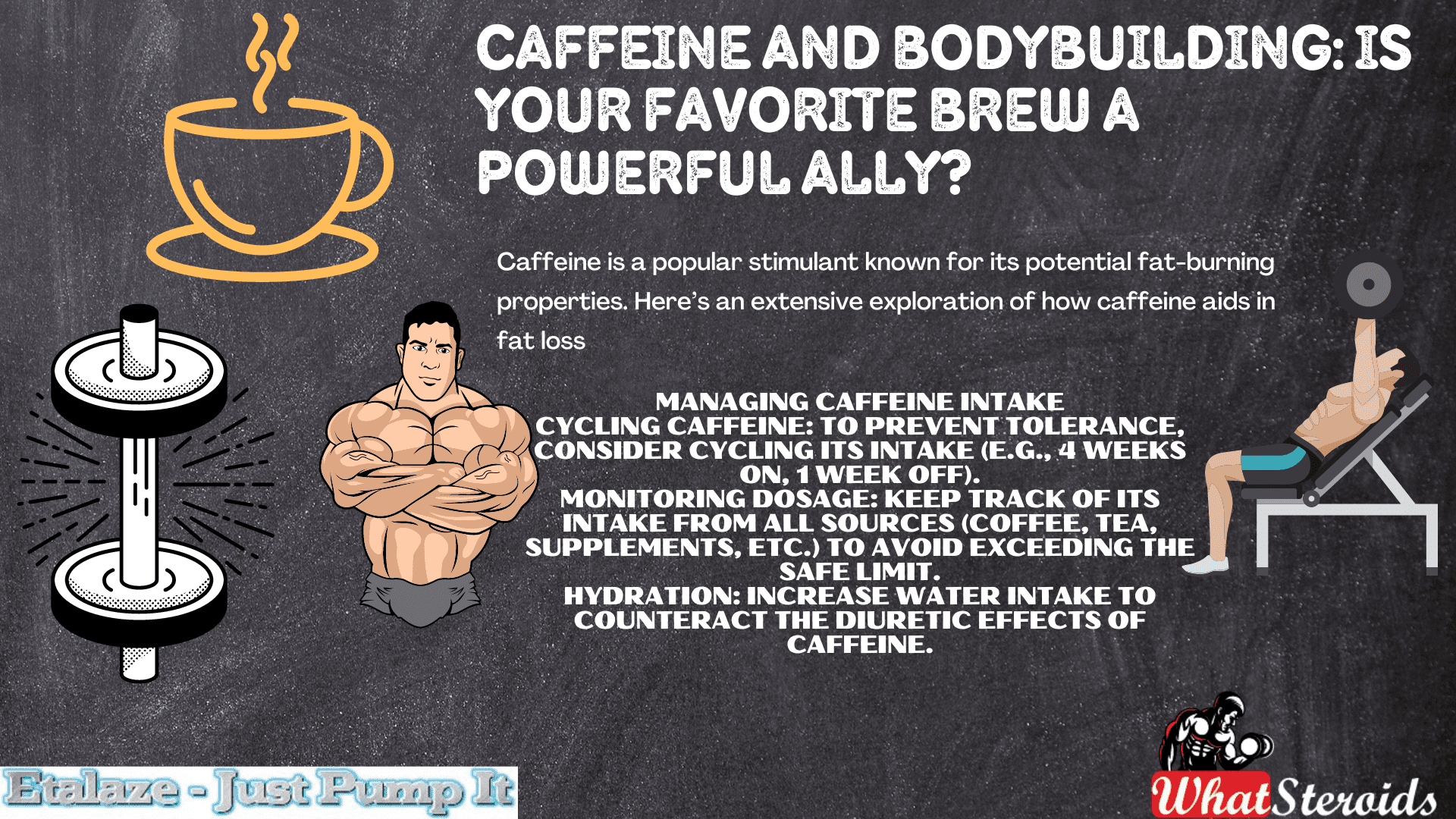
Caffeine, that beloved morning brew, may have some muscle-related benefits! A recent study in Japan found that habitual coffee drinkers had greater skeletal muscle mass. While the exact mechanism isn’t fully understood, it’s intriguing. However, caffeine’s effects on muscle protein synthesis after resistance exercise remain inconclusive. So, while your cup of joe won’t replace your dumbbells, Caffeine might give your muscles a little extra pep!
Appropriate Dosages
Pre-Workout Boost
- Timing: Take it in the morning (about 90 minutes after waking up) or right before a workout.
- Ideal Dosage: Aim for 100-200 mg, adjusted based on factors like tolerance and body weight.
- Safety Limit: Avoid exceeding 400 mg to prevent adverse effects.
During Endurance Events (3-5 hours)
- Recommended Dosage: For sustained endurance, consider ~3-6 mg/kg of body weight.
- Example: For a 70 kg (150 lb) athlete, this translates to ~200-400 mg.
Caffeine affects a bodybuilder's body in several ways, both positive and negative. Here’s a detailed look at its effects:
Must Read: Are HMB Supplements Better than Steroids? – Research Review
Positive Effects
- Enhanced Performance and Endurance:
- Increased Alertness and Focus: Caffeine stimulates the central nervous system, leading to improved mental clarity and concentration during workouts.
- Improved Muscle Strength and Power: Studies suggest that caffeine can increase the ability to generate force, enhancing performance in activities requiring strength and power.
- Increased Endurance: By mobilizing fatty acids from fat tissues and making them available for energy production, it helps sustain energy levels during prolonged activities.
- Fat Loss:
- Thermogenesis: Caffeine increases the body’s metabolic rate, leading to more calories burned at rest.
- Fat Oxidation: It promotes the use of fat as a fuel source, which can help in reducing body fat percentage.
- Reduced Perceived Effort:
- It can lower the perception of effort during workouts, making intense exercise feel less strenuous.
Negative Effects
- Dehydration:
- As a diuretic, caffeine can increase urine output, which may lead to dehydration if fluid intake is not adequately managed.
- Sleep Disturbances:
- Caffeine can interfere with sleep patterns if consumed too late in the day, leading to reduced recovery and performance in subsequent workouts.
- Increased Heart Rate and Blood Pressure:
- High doses of it can lead to increased heart rate and blood pressure, which may be risky for individuals with pre-existing cardiovascular conditions.
- Tolerance and Dependence:
- Regular use can lead to tolerance, requiring higher doses to achieve the same effects. Dependence can also develop, leading to withdrawal symptoms like headaches and fatigue if caffeine intake is suddenly reduced.
- Gastrointestinal Issues:
- Some individuals may experience stomach discomfort, acid reflux, or other gastrointestinal issues after consuming caffeine.
Specific Benefits for Bodybuilders
- Pre-Workout Motivation: Caffeine can boost mood and motivation, making it easier to stick to challenging workout routines.
- Muscle Glycogen Sparing: By utilizing fat for energy, caffeine can help spare muscle glycogen stores, allowing for prolonged performance before fatigue sets in.
- Post-Workout Recovery: Some studies suggest that caffeine can help reduce muscle soreness and speed up recovery when combined with carbohydrates.
Managing Caffeine Intake
- Cycling Caffeine: To prevent tolerance, consider cycling its intake (e.g., 4 weeks on, 1 week off).
- Monitoring Dosage: Keep track of its intake from all sources (coffee, tea, supplements, etc.) to avoid exceeding the safe limit.
- Hydration: Increase water intake to counteract the diuretic effects of caffeine.
Understanding these effects can help bodybuilders use caffeine strategically to enhance their performance and achieve their fitness goals while minimizing potential negative impacts.
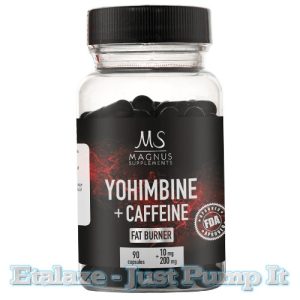 Buy Yohimbine Caffeine 90 Tabs by Magnus
Buy Yohimbine Caffeine 90 Tabs by Magnus
Caffeine Impact on Specific Chemicals
Caffeine impacts the body’s hormones, including adrenaline, cortisol, and insulin, in various ways. Here’s a detailed look at these effects:
Adrenaline
Impact:
- Stimulation: Caffeine increases the release of adrenaline (epinephrine) by stimulating the adrenal glands. This hormone is part of the body’s “fight-or-flight” response.
- Effects: The surge in adrenaline increases heart rate, blood pressure, and energy levels, preparing the body for intense physical activity. This can enhance performance in workouts, especially those requiring bursts of power and strength.
Cortisol
Impact:
- Acute Increase: Its consumption can lead to a temporary increase in cortisol levels, especially in the morning. Cortisol is a stress hormone that helps regulate metabolism, immune response, and energy production.
- Context-Dependent: The magnitude of cortisol response can depend on the individual’s habitual caffeine use, time of day, and baseline stress levels. Regular users may experience a blunted cortisol response compared to non-regular users.
- Long-Term Effects: Chronic high cortisol levels due to excessive caffeine intake can have negative effects, such as impaired immune function, increased fat deposition (particularly abdominal fat), and disrupted sleep patterns.
Also Read: Training clothing: Marvel-Inspired Clothing on Amazon in 2024
Insulin
Impact:
- Insulin Sensitivity: It can temporarily reduce insulin sensitivity, meaning that cells become less responsive to insulin. This can lead to higher blood glucose levels after carbohydrate consumption.
- Acute vs. Chronic Use: While acute intake might impair insulin sensitivity, habitual consumption does not appear to have a significant long-term impact on insulin sensitivity in most people. Some studies suggest that regular coffee consumption might even be associated with a lower risk of type 2 diabetes, possibly due to other bioactive compounds in coffee.
- Individual Variation: The effect of caffeine on insulin sensitivity can vary widely among individuals, influenced by genetic factors, the presence of metabolic conditions, and the overall diet and lifestyle.
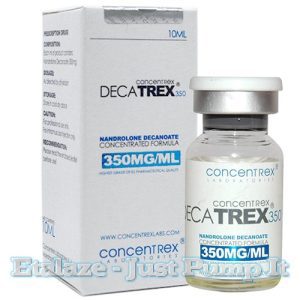 Click Here to Buy DecaTREX 350 mg/ml by Concentrex
Click Here to Buy DecaTREX 350 mg/ml by Concentrex
Fat-Burning Properties of Caffeine
Caffeine is a popular stimulant known for its potential fat-burning properties. Here’s an extensive exploration of how caffeine aids in fat loss:
Mechanisms of Fat Burning
- Thermogenesis:
- Definition: Thermogenesis is the process of heat production in the body.
- Effect of Caffeine: Caffeine increases thermogenesis by stimulating the central nervous system. This leads to a higher metabolic rate, causing the body to burn more calories at rest and during physical activity.
- Lipolysis:
- Definition: Lipolysis is the breakdown of fats into fatty acids and glycerol.
- Effect of Caffeine: It promotes lipolysis by increasing the release of adrenaline and noradrenaline, which bind to fat cell receptors and trigger the release of stored fat into the bloodstream for use as energy.
- Fat Oxidation:
- Definition: Fat oxidation is the process of burning fatty acids for energy.
- Effect of Caffeine: By mobilizing fatty acids from fat tissues, caffeine increases the availability of fats to be used as fuel, especially during aerobic exercises. This enhances the body's ability to burn fat.
- Energy Expenditure:
- Effect of Caffeine: Caffeine increases overall energy expenditure, which contributes to a greater caloric deficit and, consequently, fat loss. This effect is due to increased physical activity levels and enhanced exercise performance.
Practical Considerations for Bodybuilders
- Timing and Dosage:
- Consume it strategically to maximize performance benefits while minimizing potential hormonal disruptions.
- Avoid excessive intake to prevent chronic elevation of cortisol and significant insulin sensitivity impairment.
- Hydration and Nutrition:
- Ensure adequate hydration and balanced nutrition to support overall hormonal balance.
- Consider the timing of carbohydrate intake around workouts to manage potential blood glucose fluctuations.
- Individual Responses:
- Pay attention to individual responses to it, as effects on adrenaline, cortisol, and insulin can vary.
- Monitor for signs of excessive stress or disrupted glucose metabolism and adjust caffeine intake accordingly.
By understanding these hormonal impacts, bodybuilders can better manage their caffeine consumption to enhance performance and support overall health.
Overall
Caffeine plays a significant role in enhancing muscle mass development through several mechanisms. Firstly, it increases muscle strength and power output by stimulating the central nervous system, allowing for more intense and productive workouts. This heightened performance can lead to greater muscle fiber recruitment and overall muscle activation during resistance training. Secondly, it promotes fat loss by mobilizing fatty acids from adipose tissue, which can enhance muscle definition and visibility. By sparing muscle glycogen stores, caffeine also prolongs endurance, allowing for extended training sessions that are crucial for hypertrophy. Additionally, it has been shown to reduce perceived exertion during exercise, enabling athletes to push harder and potentially achieve greater muscle gains over time.
Lastly, caffeine may have indirect benefits by improving focus and concentration, which are crucial for maintaining proper form and technique during workouts, thereby reducing the risk of injury and ensuring consistent progress in muscle development. Overall, when used strategically, it can be a powerful ally in the pursuit of building lean muscle mass and achieving peak physical performance.
Related Article: Stacking SARMS: Different SARMS Cycles
Bodybuilding
Cellular Alchemy to Restore Testosterone Levels
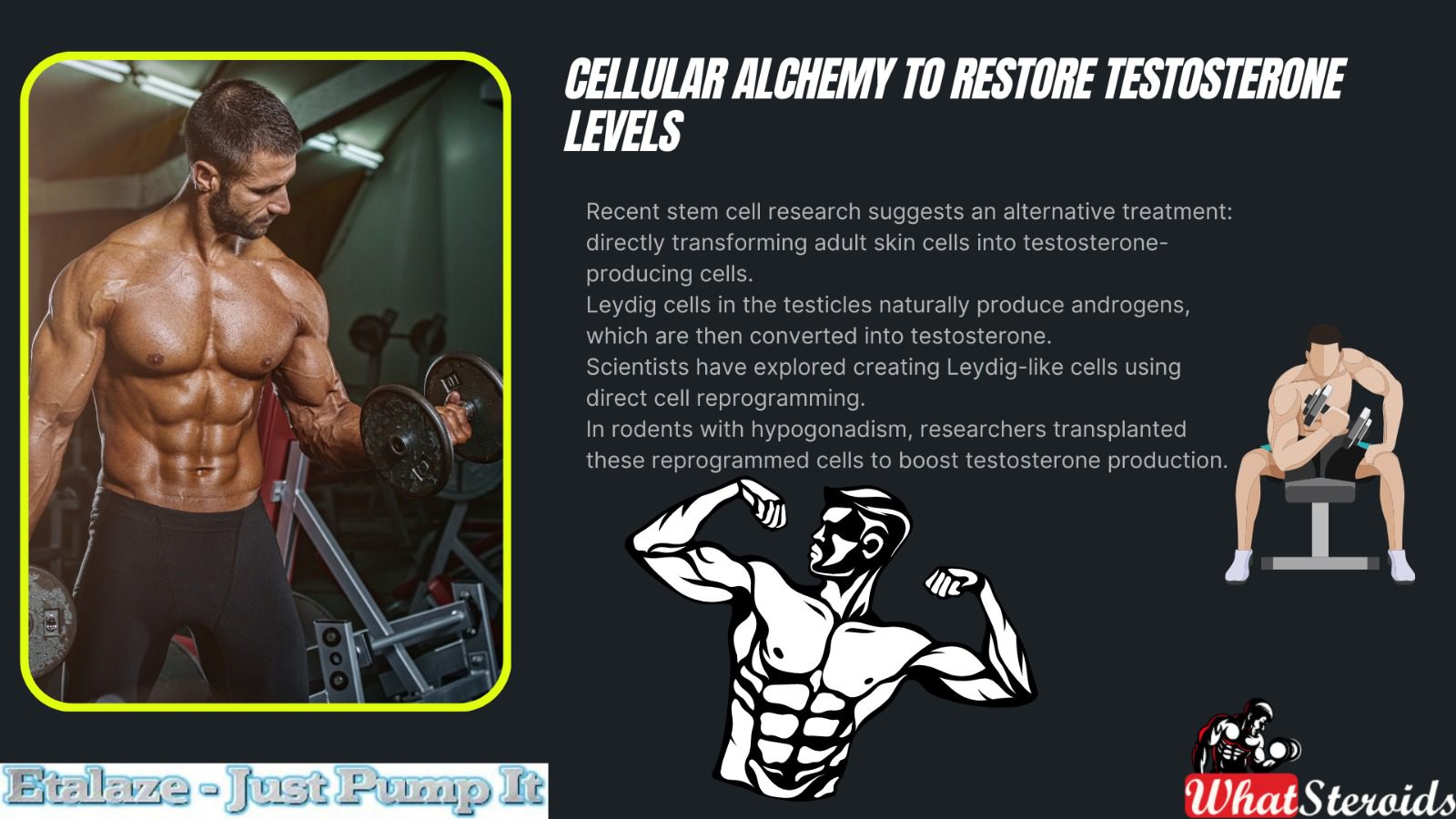
The convergence of stem cell therapy and hormone regulation represents an intriguing frontier in medical research, especially regarding the possibility of enhancing testosterone levels. In this article, we shall explore cellular Alchemy from a bodybuilding perspective.
Testosterone, the essential male hormone, plays a crucial role in various bodily functions, including muscle mass maintenance, bone density, and mood regulation. As men age, natural declines in testosterone levels can lead to hypogonadism, significantly affecting their quality of life.
Stem cell therapy or cellular Alchemy offers a promising avenue for restoring testosterone levels, even in bodybuilders. Let’s delve into the details:
Background on Testosterone and Hypogonadism
Testosterone is crucial for male sexual development, cognitive function, and overall health.
As men age, testosterone levels naturally decline, leading to conditions like hypogonadism (abnormally low testosterone).
Hypogonadism can cause mood disturbances, reduced sex drive, and weakened muscle and bone strength.
Traditional Approach: Testosterone Replacement Therapy (TRT)
The common clinical approach is testosterone replacement therapy (TRT).
However, TRT has significant side effects, including venous thromboembolism and deep vein thrombosis.
Stem Cell Research and Alternative Treatment
Recent stem cell research suggests an alternative treatment: directly transforming adult skin cells into testosterone-producing cells.
Leydig cells in the testicles naturally produce androgens, which are then converted into testosterone.
Scientists have explored creating Leydig-like cells using direct cell reprogramming.
In rodents with hypogonadism, researchers transplanted these reprogrammed cells to boost testosterone production.
Must Read: Muscle Disorders: Diagnosis, Treatment and Coping Routine
Implications for Bodybuilders
Stem cell therapy could benefit bodybuilders by:
Enhancing muscle growth: Stem cells may stimulate muscle repair and regeneration.
Improving recovery: Faster recovery after intense workouts.
Alleviating symptoms: Reduced libido, fatigue, and muscle loss associated with low testosterone.
Stem cell therapy for testosterone restoration is an exciting field, but it’s essential to understand both its potential benefits and risks. Let’s explore:
Testosterone Replacement Therapy (TRT) Risks
TRT is the common clinical approach for hypogonadism (low testosterone).
However, TRT has notable side effects, including:
Increased risk of blood clots: TRT can lead to elevated red blood cell production, potentially causing blood clots.
Sleep apnea risk: Some individuals on TRT may experience interrupted breathing during sleep.
Testicular atrophy: The testicles may shrink due to TRT.
Prostate growth: Regular prostate cancer monitoring becomes necessary.
Stem Cell Therapy Approach
Recent research explores an alternative: directly transforming adult skin cells into testosterone-producing cells.
Scientists aim to create Leydig-like cells using direct cell reprogramming.
Leydig cells in the testicles naturally produce androgens, which then convert into testosterone.
In rodent studies, researchers transplanted these reprogrammed cells to boost testosterone production2.
Implications and Caution
Stem cell therapy shows promise, but it’s still experimental.
Risks associated with stem cell therapy are not fully understood.
Safety, efficacy, and long-term effects need further investigation.
Cellular Alchemy Success Rate
Stem cell therapy for testosterone restoration shows promising results, particularly in the context of male hypogonadism. Let’s explore the success rates based on recent research:
Background on Male Hypogonadism
Male hypogonadism is characterized by abnormally low testosterone levels.
It can lead to mood disturbances, reduced sex drive, and decreased muscle and bone strength.
Approximately 30% of older men are affected by this condition.
Common Clinical Approach: Testosterone Replacement Therapy (TRT)
TRT is the standard treatment for hypogonadism.
However, TRT has significant side effects, including venous thromboembolism and deep vein thrombosis.
Stem Cell Research and Leydig-Like Cells
Scientists have explored an alternative using stem cells.
They directly transform adult skin cells into Leydig-like cells, which produce androgens and then biosynthesize testosterone.
In rodent studies, these reprogrammed Leydig cells were transplanted into testosterone-deficient animals.
Remarkably, the cells survived and restored normal testosterone levels in males with hypogonadism.
Success Rate
While individual outcomes may vary, stem cell therapy has shown promise.
Success rates are not universally defined, but the approach offers an exciting alternative to androgen replacement therapy.
Related Article: First Injectable Steroid Cycle
Holistic Approach to Men’s Health
Research Progress: As scientific knowledge advances, we recognize that health interventions should consider the whole person, not just isolated aspects.
Stem Cell Therapy: This emerging field offers potential benefits for various health conditions, including hypogonadism (low testosterone).
Holistic View: Rather than focusing solely on stem cell therapy, we should integrate it into a broader approach that considers lifestyle factors.
Lifestyle Factors and Testosterone
Diet: Proper nutrition is crucial. Certain nutrients (like zinc and vitamin D) support testosterone production.
Exercise: Regular physical activity, especially resistance training, positively influences testosterone levels.
Stress Management: Chronic stress can lower testosterone. Techniques like meditation and relaxation help maintain hormonal balance.
Complementary Role of Stem Cell Therapy
Enhancing Well-Being: Stem cell therapy complements lifestyle efforts.
Managing Hypogonadism: It can address testosterone deficiency, but it’s not a standalone solution.
Synergy: Combining stem cell therapy with lifestyle changes creates a comprehensive strategy.
Overall Health: This approach benefits not only testosterone levels but also overall health and vitality.
Viewing stem cell therapy holistically involves integrating it with lifestyle choices, creating a synergistic approach to men’s health.
Dietary Recommendations to Support Cellular Alchemy
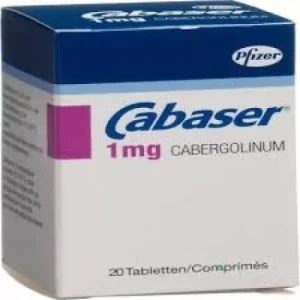 Buy Cabaser 1 mg [20 Tabs, Pfizer]
Buy Cabaser 1 mg [20 Tabs, Pfizer]
When it comes to managing hypogonadism, dietary choices play a crucial role. Here are some dietary recommendations:
Nutrient-Rich Foods
Zinc: Include foods like oysters, beef, pumpkin seeds, and legumes. Zinc supports testosterone production.
Vitamin D: Fatty fish (salmon, mackerel), fortified dairy products, and sunlight exposure help maintain healthy levels.
Healthy Fats: Avocado, nuts, and olive oil provide essential fats for hormone synthesis.
Avoid Excessive Alcohol and Sugar
Alcohol can negatively impact testosterone levels.
High sugar intake may lead to insulin resistance, affecting hormonal balance.
Protein Intake
Adequate protein supports muscle growth and overall health.
Include lean meats, eggs, and plant-based protein sources.
Anti-Inflammatory Foods
Chronic inflammation can affect testosterone.
Consume fruits, vegetables, and whole grains to reduce inflammation.
Natural Alternatives to Cellular Alchemy
If you’re looking for natural ways to boost testosterone without relying on cellular alchemy, consider the following strategies:
Ashwagandha Supplement
Ashwagandha, an adaptogenic herb, has been linked to reduced stress and increased testosterone levels.
In studies, it improved muscle strength and testosterone in men who took 600 mg daily for eight weeks.
Note that it didn’t have the same effect on women.
Prioritize Sleep
Aim for 7-9 hours of quality sleep each night.
Lack of sleep can lower testosterone levels, so prioritize rest.
Optimize Vitamin D
Vitamin D deficiency is associated with low testosterone.
Get sunlight exposure or consider supplements if needed.
Dietary Choices
Certain foods can help raise testosterone:
Grass-fed beef: Rich in nutrients and healthy fats.
Zinc-rich foods: Oysters, beef, and pumpkin seeds.
Vitamin D sources: Fatty fish and fortified dairy products.
Keep in mind that a holistic approach that combines lifestyle changes, nutrition, and natural supplements can contribute to maintaining healthy testosterone levels. Always consult a healthcare professional for personalized advice.
Overall
As a general recommendation, we advise caution regarding cellular alchemy. While it shows promise for testosterone restoration, it remains experimental. Consult a healthcare professional before considering it. For bodybuilders, natural alternatives (like lifestyle changes and supplements) are safer and more widely applicable.
Also Read: Meet the World’s Strongest Grannies
-

 Bodybuilding2 years ago
Bodybuilding2 years agoNew Arrival Workout Equipment on Amazon for The Disabled
-
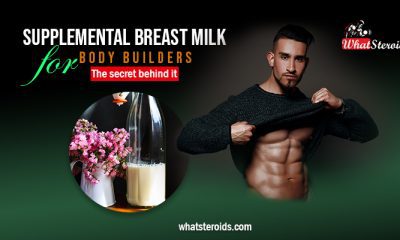
 Steroids2 years ago
Steroids2 years agoSupplemental Breast Milk for Bodybuilders: The Secret Behind It
-

 Steroids2 years ago
Steroids2 years agoDwarf Bodybuilders Giving Pros A Run for Their Money
-

 Steroids1 year ago
Steroids1 year agoVOX Testing: Why Bodybuilders Must Have It Tested Regularly
-

 Steroids1 year ago
Steroids1 year agoShavers and Other Body Grooming Equipment for Bodybuilders In 2023
-

 Steroids1 year ago
Steroids1 year agoChatGPT and Other Avenues to Find Great Bodybuilding Coaches
-

 Steroids1 year ago
Steroids1 year agoBest Oil Recommendations Before Competition for Subtle Shimmer
-
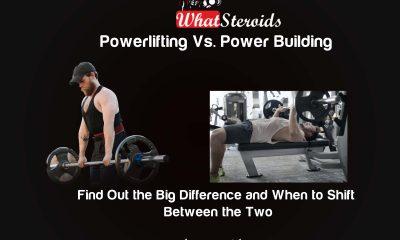
 Steroids1 year ago
Steroids1 year agoPowerlifting Vs Power Building: Find Out the Big Difference and When to Shift Between the Two
-

 Beginners12 months ago
Beginners12 months agoTren Cycle for Beginners
-
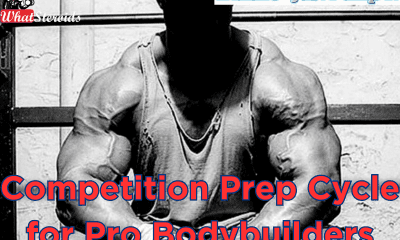
 Bodybuilding11 months ago
Bodybuilding11 months agoCompetition Prep Cycle for Pro Bodybuilders
-

 Nutrition9 months ago
Nutrition9 months agoEverything Nutritional Food: What’s Too Much Or Too Little
-
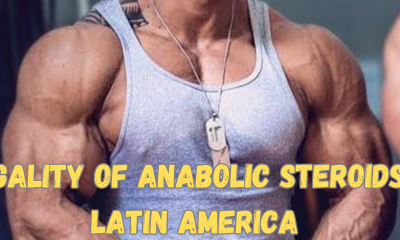
 Anabolic Steroids8 months ago
Anabolic Steroids8 months agoLegality of Anabolic Steroids In Latin America
-

 Bodybuilding8 months ago
Bodybuilding8 months agoChia Seeds in A Bodybuilder’s Diet: An Expert’s Advice
-
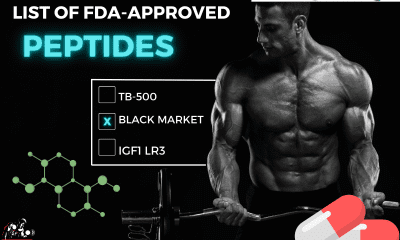
 Bodybuilding6 months ago
Bodybuilding6 months agoList of FDA-Approved Peptides
-

 Anabolic Steroids7 months ago
Anabolic Steroids7 months agoStart The New Year Strong With These Tips
-

 Anabolic Steroids9 months ago
Anabolic Steroids9 months agoNatural Steroids for Bodybuilding
-

 Beginners9 months ago
Beginners9 months agoCalisthenics: Secret to Building A Better Upper and Middle Body
-

 Bodybuilding7 months ago
Bodybuilding7 months agoUnique Things That Have Redefined Mr Olympia Over The Years
-

 Steroids5 months ago
Steroids5 months agoTrenbolone: Why it Remains A Beast In the Market
-
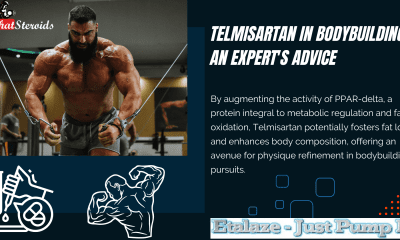
 Bodybuilding Products4 months ago
Bodybuilding Products4 months agoTelmisartan In Bodybuilding: An Expert’s Advice
-

 Bodybuilding5 months ago
Bodybuilding5 months agoThe Importance of Scaptions in Female Athletes
-
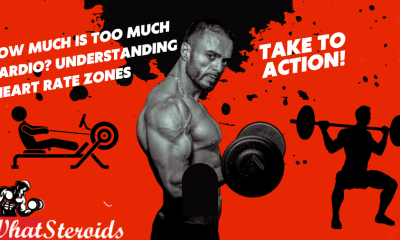
 Bodybuilding4 months ago
Bodybuilding4 months agoHow Much Is Too Much Cardio? Understanding Heart Rate Zones
-

 Bodybuilding6 months ago
Bodybuilding6 months agoFunny Gym Stories and Moments to Light Up Your Day
-

 Steroids8 months ago
Steroids8 months agoThese Bodybuilding Equipment Might Become Obsolete Next Year (See Alternative Upgrades)
-
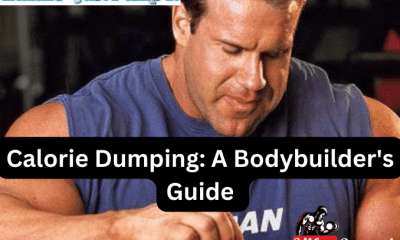
 Bodybuilding7 months ago
Bodybuilding7 months agoCalorie Dumping: A Bodybuilder’s Guide


